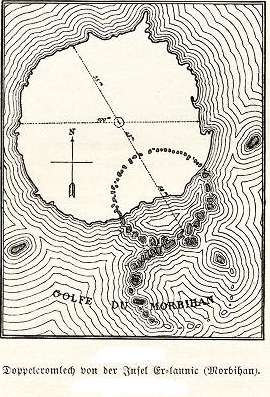Various ideas have been put forward but whatever the original purpose, one agreed fact about causeways is they're man-made constructs (though even that can prove contentious, e.g. Sark's La Coupee and the Burgh Island causeway). The material used is natural but we understand of course this is not a natural formation.
Investigating the artificiality or not of a causewayed island itself however appears to be several steps too far. If it's agreed that some if not most barrows, hills, tors and assorted cairns are 'signposts', essential for overland direction-finding, a similar signposting system at the coast doesn't seem extraordinary at all.
Looking at St Michael's Mount, it stands alone, unless you count a small rock (St Clement's) at the western entrance of Mount's Bay off Mousehole as an island. The Mount seems to comprise a rather jumbled pile of rocks, partly granite but also something called metapelite

which is clay mixed with silt and/or mud according to Wiki
Pelite (Greek pelos, clay) is an old and currently not widely used field geological term for a clayey fine-grained clastic sediment or sedimentary rock, i.e. mud or a mudstone. It is equivalent to the Latin-derived term lutite.* More commonly, metamorphic geologists currently use pelite for a metamorphosed fine-grained sedimentary rock, i.e. mudstone or siltstone, which should technically be called a metapelite
Mudstone aka metapelite is not very different from other building materials like marl, used for constructing barrows relatively close at hand such as Burrowbridge Mump and Marlborough's Merlin Mount, formations that are as big or bigger than St Michael's Mount. Geologists assume everything is natural unless it patently isn't (e.g. Silbury Hill). One cannot help suspecting that if faced with something ambiguous or anomalous, a geologist will probably coin a 'meta-' to cover it.
* Paris was called Lutetia (or Lutetia Parisiorum) i.e. mud-place or mud-island by the Romans.






